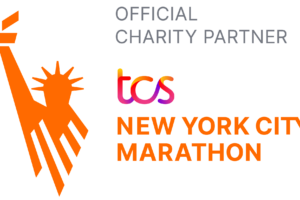MASAB Memo #5, March 7, 2018 New Study Results – Clot-Busting Treatment
by Suresh Vedantham, MD, Professor of Radiology & Surgery, Mallinckrodt Institute of Radiology, Washington University, St. Louis
 Each year, about 300,000 Americans are diagnosed with deep vein thrombosis (DVT, a blood clot in a leg vein) for the first time. Despite the use of standard treatment (anticoagulant drugs and compression stockings), about 40% of DVT patients develop a long-term complication called post-thrombotic syndrome (PTS). PTS impairs patients’ quality of life and typically causes chronic pain and swelling of the leg that occur on a daily basis. Patients who develop PTS of greater severity experience major disability that can prevent them from walking even short distances without pain, working, or conducting normal daily activities. Some patients develop open sores on the leg called “venous ulcers” that heal poorly. However, few patients are told about the possibility of developing PTS or venous ulcers when they are first diagnosed with DVT.
Each year, about 300,000 Americans are diagnosed with deep vein thrombosis (DVT, a blood clot in a leg vein) for the first time. Despite the use of standard treatment (anticoagulant drugs and compression stockings), about 40% of DVT patients develop a long-term complication called post-thrombotic syndrome (PTS). PTS impairs patients’ quality of life and typically causes chronic pain and swelling of the leg that occur on a daily basis. Patients who develop PTS of greater severity experience major disability that can prevent them from walking even short distances without pain, working, or conducting normal daily activities. Some patients develop open sores on the leg called “venous ulcers” that heal poorly. However, few patients are told about the possibility of developing PTS or venous ulcers when they are first diagnosed with DVT.
For many years, doctors have tried to find solutions to PTS, but without great success. It is known that PTS often develops in patients who have multiple DVT episodes in the same leg, so anticoagulant drugs probably help to some extent. Compression stockings have been carefully studied, but the best evidence suggests that they do not work to prevent PTS (but they can sometimes be helpful to reduce leg swelling).
PTS occurs because DVT causes long-term blockage of the veins and damage to the one-way vein valves, resulting in increased pressure in the leg veins. For this reason, doctors have speculated that actively removing the blood clot soon after DVT diagnosis may preserve good venous function and prevent PTS. Pharmacomechanical catheter-directed thrombolysis (“PCDT”) is a minimally-invasive treatment that removes blood clots through a tiny (2-3 mm) incision using the clot-busting drug tissue plasminogen activator (TPA) along with catheter-based devices that can chew up the clots. The benefits and risks of PCDT have not been previously evaluated for DVT treatment in a rigorous study.
On December 7, 2017, the results of the ATTRACT Trial, which was primarily sponsored by the National Heart Lung and Blood Institute (NHLBI) of the National Institutes of Health (NIH), were published in The New England Journal of Medicine. In ATTRACT, the most rigorous study to date of clot-busting treatment for DVT, 692 patients with above-knee DVT were randomized (like the flip of a coin) to either receive, or not receive, PCDT treatment in 56 U.S. hospitals. All the patients received anticoagulation and compression stockings.
The study confirmed that PTS is very common, developing in 48% of patients during the two years of the study. During this time, moderate-to-severe PTS occurred in 24% of study patients.
The primary study result was that for most patients with DVT, the addition of PCDT to standard therapy did not prevent the development of PTS. Because the use of PCDT caused a small (1.4%) but statistically significant increase in major bleeding complications, it should not be routinely used as first-line DVT treatment.
However, PCDT did reduce the severity of PTS and also reduced DVT-related leg pain and swelling. There was a suggestion that these benefits were more likely to occur in patients with the largest blood clots (i.e. those that were in veins in the groin or higher). Further analyses are being done to confirm this finding, and determine how clinically important it is.
ATTRACT has advanced patient care by providing high-quality evidence that: (A) enables most DVT patients to avoid an unnecessary medical procedure; but (B) suggests that patient comfort during initial DVT care may be improved, and late disability reduced, through more targeted use of PCDT to specific patients. More information will be forthcoming but for now, patients should ask their physician about clot-removal treatment only if their DVT is very large and their leg symptoms continue to be severe even after 5-7 days of anticoagulation. Only patients who are at a very low risk for bleeding should be treated in this manner.
It is hoped that the concrete, high-quality data provided by the ATTRACT Trial will enable DVT patients to make better choices for their own care.
Learn the basics about blood clots here.
If you are seeking medical care or a second opinion, you can use our Find a Physician tools here.






